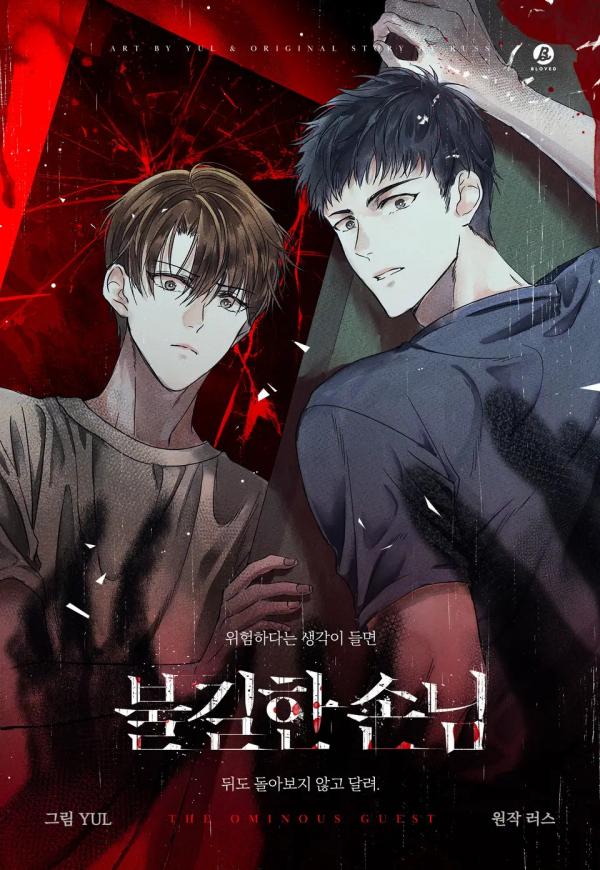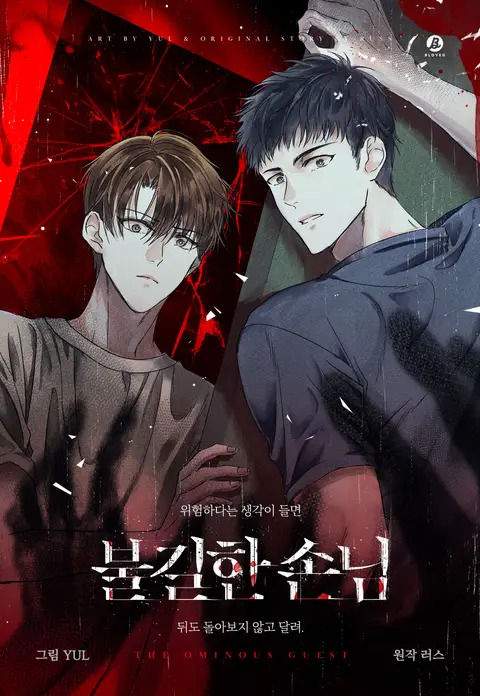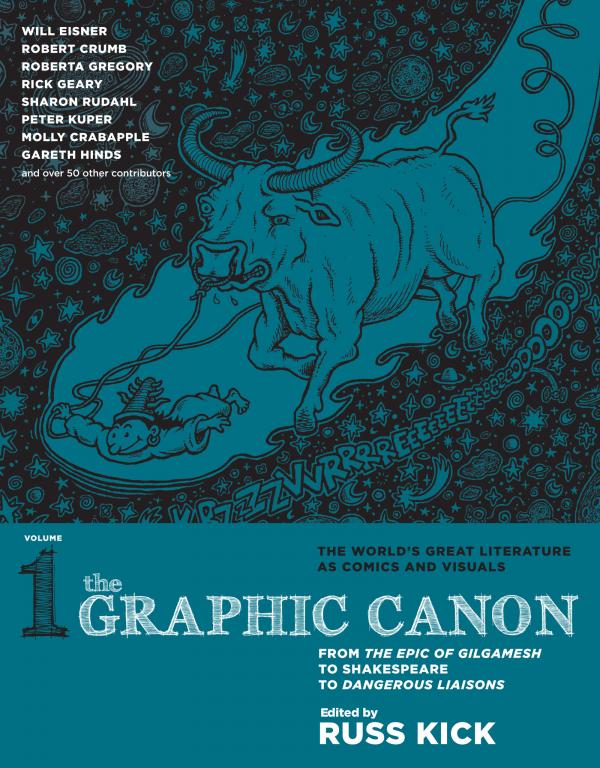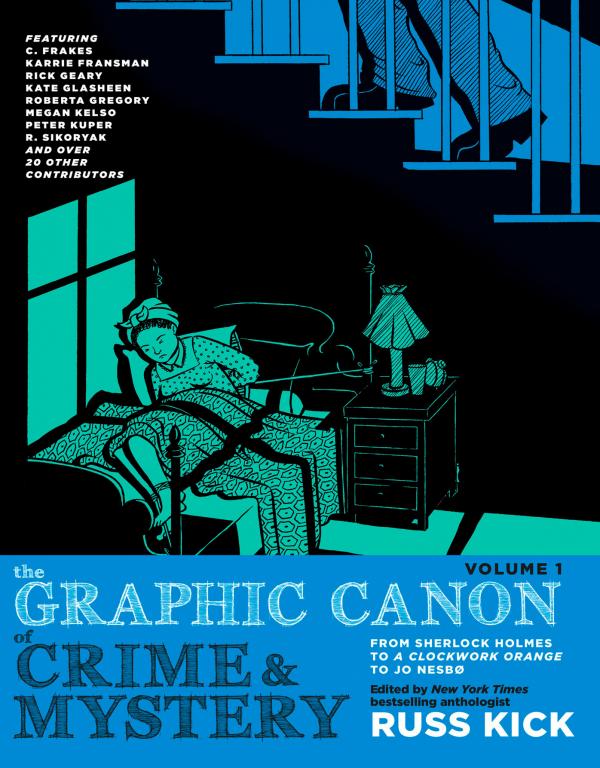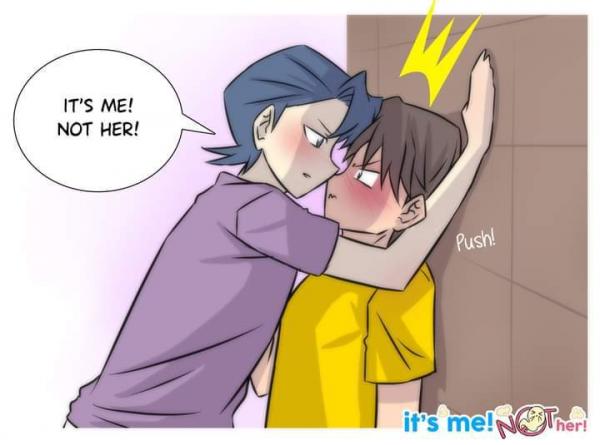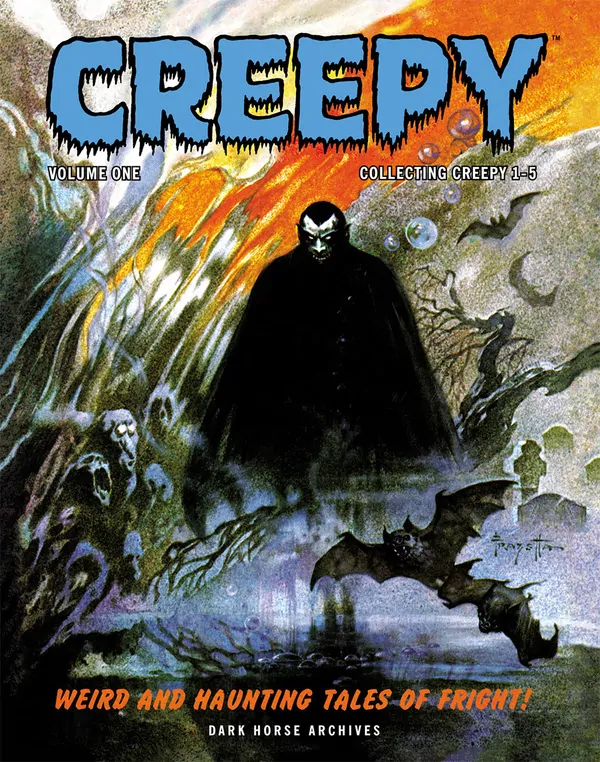All Manga, Character Designs and Logos are © to their respective copyright holders.
One day, Yeongjun's younger sister, Soyoung, falls ill with a strange disease after returning from an MT (membership training). To unravel the bizarre phenomena happening to her, Yeongjun seeks out his distant relative, Doyeon, who has spiritual abilities. However, Doyeon pushes Yeongjun away. As the two of them struggle, an unidentified entity appears before them, bringing a series of horrific events. Haunted by ghosts and uncovering Doyeon's dark past, what fate awaits the two of them?
THE GRAPHIC CANON (Seven Stories Press) is a gorgeous, one-of-a-kind trilogy that brings classic literatures of the world together with legendary graphic artists and illustrators. There are more than 130 illustrators represented and 190 literary works over three volumes—many newly commissioned, some hard to find—reinterpreted here for readers and collectors of all ages. Volume 1 takes us on a visual tour from the earliest literature through the end of the 1700s. Along the way, we're treated to eye-popping renditions of the human race's greatest epics: Gilgamesh, The Iliad, The Odyssey (in watercolors by Gareth Hinds), The Aeneid, Beowulf, and The Arabian Nights, plus later epics The Divine Comedy and The Canterbury Tales (both by legendary illustrator and graphic designer Seymour Chwast), Paradise Lost, and Le Morte D'Arthur. Two of ancient Greece's greatest plays are adapted—the tragedy Medea by Euripides and Tania Schrag’s uninhibited rendering of the very bawdy comedy Lysistrata by Aristophanes (the text of which is still censored in many textbooks). Also included is Robert Crumb’s rarely-seen adaptation of James Boswell’s London Journal, filled with philosophical debate and lowbrow debauchery. Religious literature is well-covered and well-illustrated, with the Books of Daniel and Esther from the Old Testament, Rick Geary’s awe-inspiring new rendition of the Book of Revelation from the New Testament, the Tao te Ching, Rumi’s Sufi poetry, Hinduism’s Mahabharata, and the Mayan holy book Popol Vuh, illustrated by Roberta Gregory. The Eastern canon gets its due, with The Tale of Genji (the world’s first novel, done in full-page illustrations reminiscent of Aubrey Beardsley), three poems from China’s golden age of literature lovingly drawn by pioneering underground comics artist Sharon Rudahl, the Tibetan Book of the Dead, a Japanese Noh play, and other works from Asia. Two of Shakespeare’s greatest plays (King Lear and A Midsummer Night’s Dream) and two of his sonnets are here, as are Plato’s Symposium, Gulliver’s Travels, Candide, A Vindication of the Rights of Woman, Renaissance poetry of love and desire, and Don Quixote visualized by the legendary Will Eisner. Some unexpected twists in this volume include a Native American folktale, an Incan play, Sappho’s poetic fragments, bawdy essays by Benjamin Franklin, the love letters of Abelard and Heloise, and the decadent French classic Dangerous Liaisons, as illustrated by Molly Crabapple. Edited by Russ Kick, The Graphic Canon is an extraordinary collection that will continue with Volume 2: "Kubla Khan" to the Bronte Sisters to The Picture of Dorian Gray in Summer 2012, and Volume 3: From Heart of Darkness to Hemingway to Infinite Jest in Fall 2012. A boxed set of all three volumes will also be published in Fall 2012.
From James M. Cain to Stephen King, from Sophocles to the Marquis de Sade to Iceberg Slim, here are stunning and sometimes macabre visualizations of some of the greatest crime and mystery stories of all time. Rick Geary brings his crisp style to Dostoevsky's Crime and Punishment; C. Frakes resurrects the forgotten novella "Talma Gordon," the first mystery written by an African American. Crime finds new life in these graphic renditions of The Arabian Nights, the Bible, James Joyce's Dubliners, Patricia Highsmith, and leading mystery writers of today like Jo Nesbø. Crime and mystery have never been so brilliantly reimagined.
Lucio and Paolo are sworn enemies, but one day, Amy, a girl who loved Paolo all her life, dies. Now Amy has become a ghost and she keeps using Lucio's body so she could finally confess her love to Paolo! Stay tuned to find out more.
Gather up your wooden stakes, your blood-covered hatchets, and all the skeletons in the darkest depths of your closet, and prepare for a horrifying adventure into the darkest corners of comics history. Dark Horse Comics further corners the market on high-quality horror storytelling with one of the most anticipated releases of the decade - a hardcover archive collection of the legendary Creepy Magazine! This groundbreaking material turned the world of graphic storytelling on its head in the early 1960s, as phenomenal young artists like Bernie Wrightson and Neal Adams reached new artistic heights with their fascinating explorations of classic and modern horror stories.
